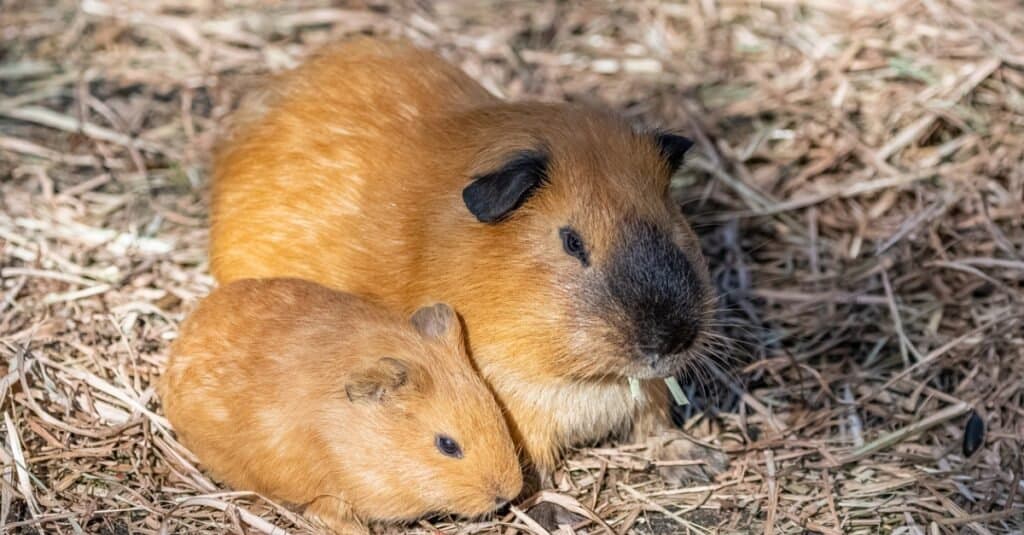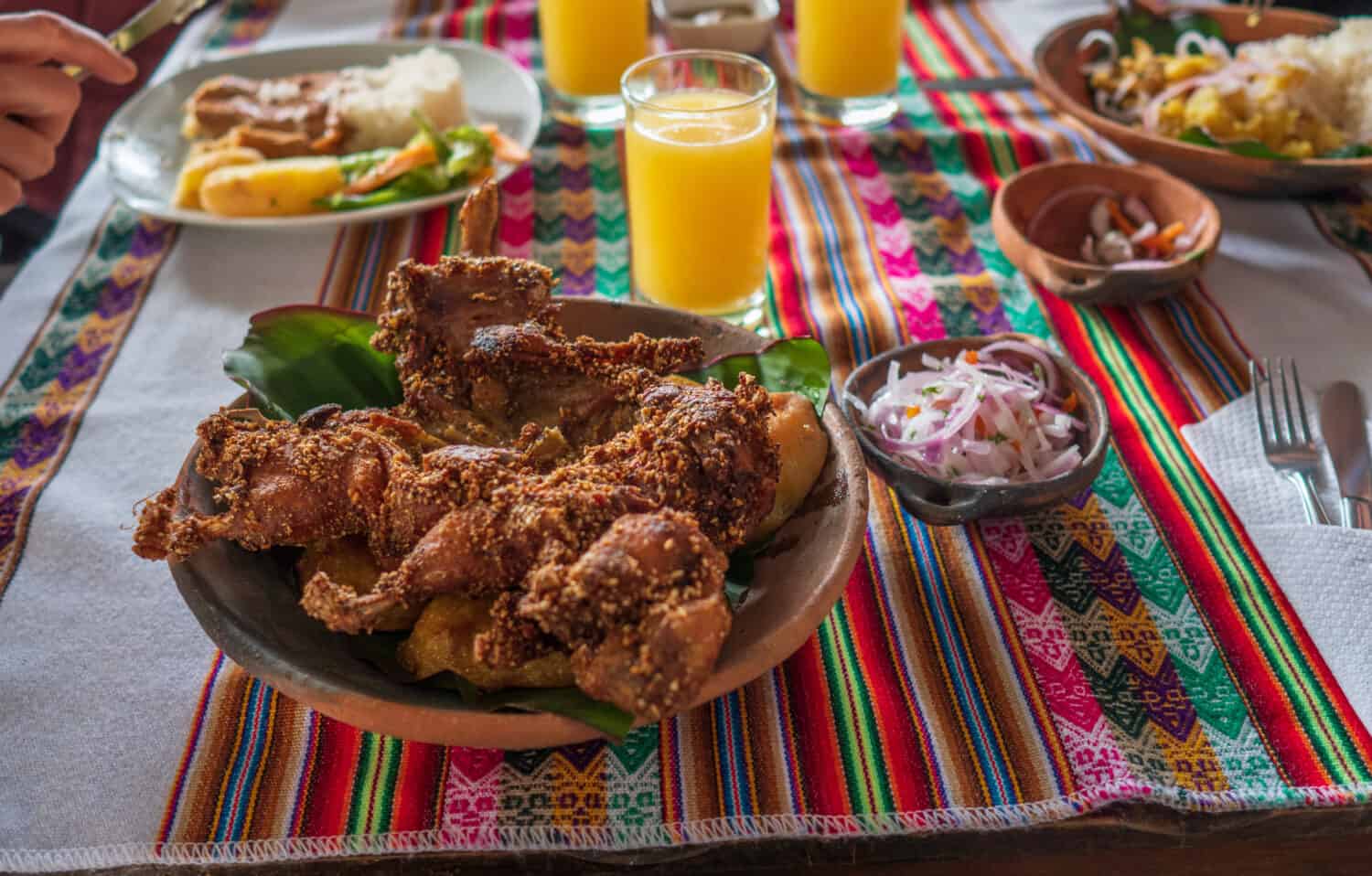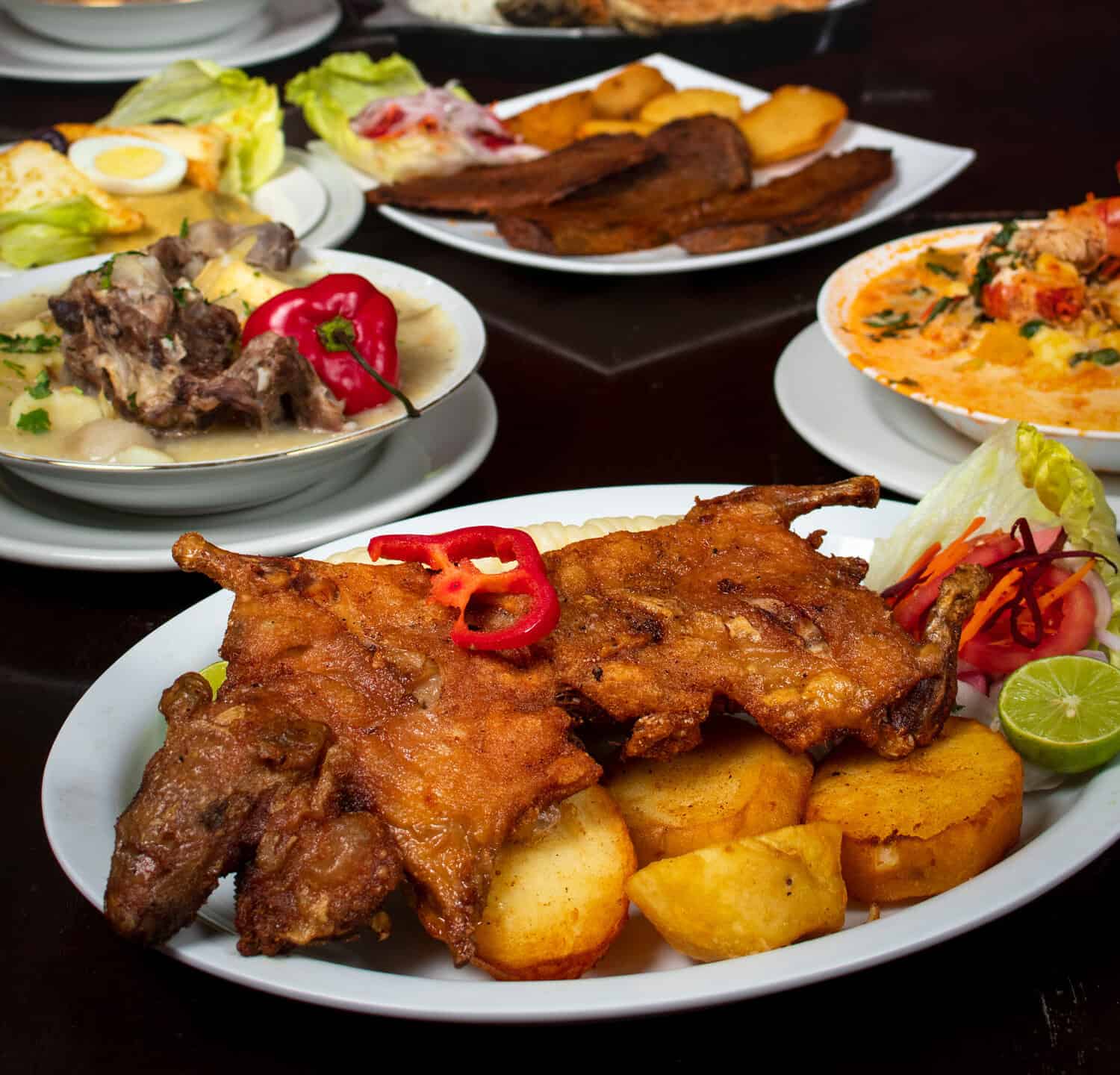Key Points:
- Cuy, or guinea pig, is a traditional delicacy in South American countries like Peru, Ecuador, and Colombia.
- Cuy is lean, high in protein, and rich in vital nutrients.
- It tastes similar to rabbit or chicken and can be cooked in various ways.
- Regulations ensure humane farming practices, but ecological considerations remain crucial.
The idea of eating guinea pigs may seem a bit strange at first. But cuy is a traditional delicacy in many South American countries like Peru, Ecuador, and Colombia. If you’re feeling adventurous and want to expand your culinary horizons, guinea pig meat may be worth trying if you ever visit the countries that offer it.
Here are seven things you should know about guinea pig meat:
Cuy Has Been Eaten for Thousands of Years
Raising guinea pigs for food dates back at least 3,000 years to the pre-Inca Andean civilizations. Archaeological evidence shows cuyes were domesticated as livestock and selectively bred for meat.
pigs
Andean civilizations realized that guinea pigs were an efficient food source – the animals have a higher feed-to-meat conversion ratio than other livestock. Plus, they reproduce quickly and require minimal space and resources to raise.
So while eating cuy may seem exotic to many cultures today, it’s been a regular part of South American diets for millennia!

Cuy is high in protein.
©iStock.com/Pascale Gueret
Cuy Meat is Lean and High in Protein
One of the biggest benefits of eating guinea pig meat is its nutritional profile.
Cuy is low in fat and calories while high in protein – a 100g portion contains about 20g. The meat also contains important vitamins and minerals like iron, potassium, and zinc.
This makes cuy an incredibly healthy choice of meat. It’s leaner than beef or pork with a similar protein content. The low fat and cholesterol levels are perfect if you want to add more protein to your diet without excess calories or fat.
The Flavor is Described as Tasting Like Rabbit or Chicken
So what does guinea pig taste like? According to those who have tried it, cuy has a flavor profile comparable to rabbit or chicken.
The meat is described as tender and juicy with a delicate, gamier flavor than chicken. Think mildly gamey poultry. There is no strong or overpowering flavor.
Cuy can be prepared in many ways – fried, roasted, baked, or in stews and curries. This allows the mild flavor to take on the flavors of any sauces, seasonings, or spices cooked with.

Cuy is on the menu in Peru and Ecuador restaraunts.
©Framalicious/Shutterstock.com
You Can Find Cuy on Menus in Peru and Ecuador
If you ever travel to Peru or Ecuador, look out for cuy on the menus at local restaurants. Guinea pig is a traditional and common food in these countries.
Peruvian cuy chactado (fried guinea pig) is often an appetizer or shared platter. In Ecuador, hornado de cuy is a roasted guinea pig that is stuffed and cooked.
Trying guinea pig meat is a way to immerse yourself in South American food culture. Locals will appreciate you sampling this iconic staple of traditional Andean cuisine!
There Are Cuy Farming Regulations in Place
Raising guinea pigs for their meat is common practice in parts of South America. However, there are some regulations around cuy farming.
In Peru, legislation prevents intensive factory farming of guinea pigs. Cuy can only be raised on small rural farms with access to outdoor runs. This ensures humane treatment of the animals.
Ecuadorian government agencies also monitor guinea pig farms for proper housing, feed, slaughter methods, and processing. Regulations help maintain animal welfare and food quality standards for cuy meat production.

People with autoimmune conditions and women who are pregnant should avoid cuy.
©OrlandoPhotography/Shutterstock.com
Certain Groups May Need to Avoid Guinea Pig Meat
While eating guinea pig can be fine for most people, there are some instances where medical experts advise against consuming cuy:
Women who are pregnant: There is a small risk of contracting toxoplasmosis from undercooked guinea pig meat, which can harm a fetus.
Those with autoimmune disorders: Guinea pigs can rarely carry pathogens that may trigger autoimmune responses.
Consult your physician if you have concerns about eating guinea pig meat. For the general population, properly cooked cuy is considered safe by health authorities.
Sustainability Depends on Farming Methods
Like all meats, the sustainability of guinea pig meat production can vary:
On smaller family farms, cuyes eat vegetable scraps and forage grass. Their manure also fertilizes crops. This can be an eco-friendly food source.
But intensive cuy farming has raised some environmental concerns, like pollution from waste.
Wild guinea pig populations are also declining in the Andes. There needs to be more habitat conservation.
When sourced ethically from local farms, cuy can be a sustainable part of indigenous food culture. But as with any meat, people should consider ecological impacts.
| 7 Cuy Facts | |
|---|---|
| #1 | Cuy, or guinea pig meat, has been consumed for over 3,000 years in South American countries. |
| #2 | Cuy is lean, high in protein, and packed with essential vitamins and minerals. |
| #3 | The taste of cuy is often compared to rabbit or chicken, and it can be prepared in various ways. |
| #4 | Cuy is a common item on the menus in Peru and Ecuador, showcasing its cultural significance. |
| #5 | Farming regulations exist to ensure the humane treatment of guinea pigs raised for consumption. |
| #6 | Certain groups, such as pregnant women and those with autoimmune disorders, may need to avoid cuy. |
| #7 | The sustainability of cuy production varies and depends on farming methods and ecological impact. |
The photo featured at the top of this post is © Framalicious/Shutterstock.com
Thank you for reading! Have some feedback for us? Contact the AZ Animals editorial team.






